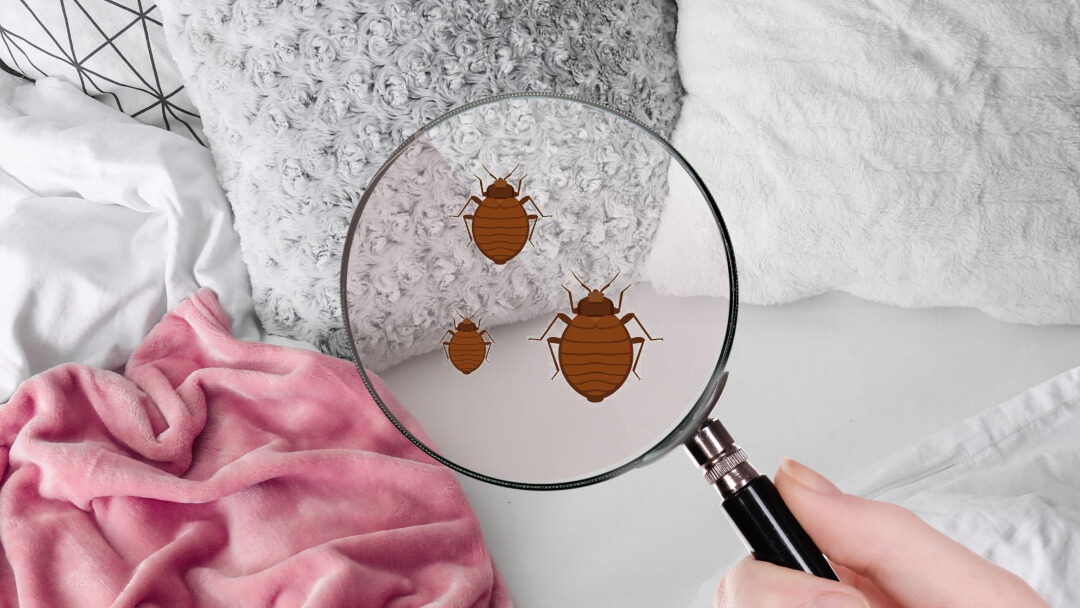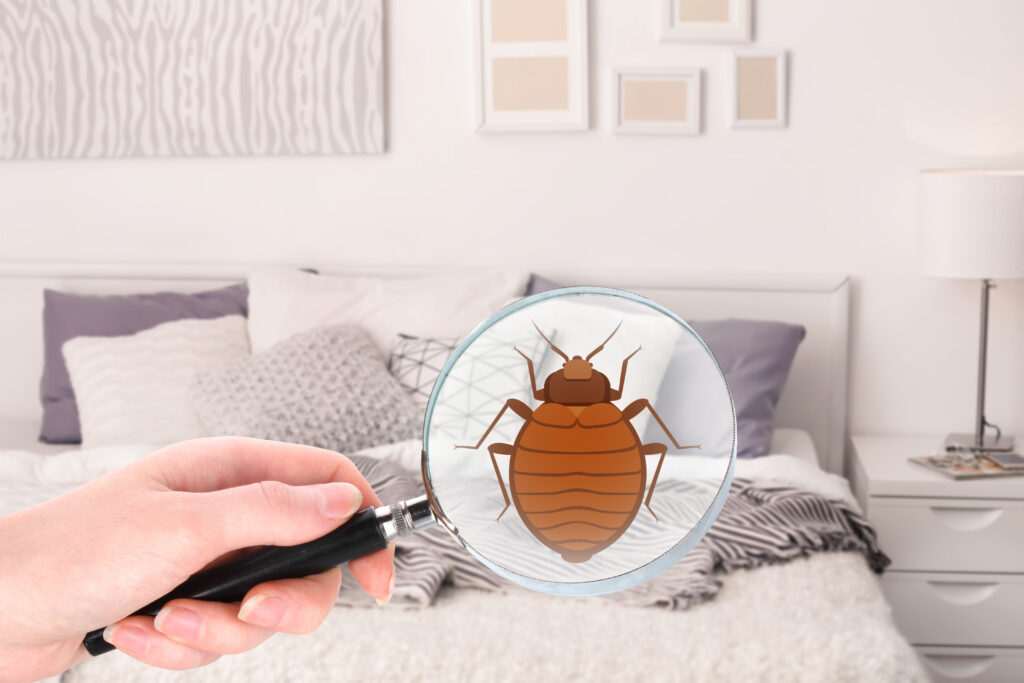Obtain Enlightened Regarding the Kinds of Bug Control Techniques and Their Advantages for House Owners
Comprehending the numerous pest control techniques offered to home owners is essential for efficient bug monitoring. Homeowners who are knowledgeable can make strategic options that not only address insect problems yet also enhance the overall quality of their living atmosphere.
Chemical Insect Control Methods
Chemical pest control methods are a vital part of incorporated bug administration techniques for property owners seeking reliable remedies to pest problems. These techniques entail the application of chemical materials designed to get rid of or deter parasites that endanger personal effects, health, and convenience. Common chemicals made use of include pesticides, fungicides, herbicides, and rodenticides, each tailored to target certain pests.
The key advantage of chemical parasite control is its rapid performance; numerous solutions offer prompt results, lowering pest populations dramatically in a short time. Furthermore, advancements in chemical solutions have caused products that are much more eco-friendly and have lower poisoning levels for non-target organisms when used correctly.

Biological Parasite Control Methods
Natural pest control approaches have actually gotten importance as property owners seek much safer and much more lasting options to standard chemical techniques. Biological pest control techniques utilize all-natural killers, parasites, or pathogens to take care of bug populations successfully. This method is not just eco-friendly however also lessens the risk of injury to non-target species, consisting of valuable pests and wildlife.
One of one of the most usual organic control approaches includes introducing all-natural killers right into the atmosphere. For example, ladybugs can be used to regulate aphid populaces, while nematodes target soil-dwelling bugs like grubs. Furthermore, parasitoids-- organisms that survive on or within a host-- can be utilized to control particular pest varieties by laying eggs inside them, inevitably causing their demise.
Another approach is the use of biopesticides, which are derived from natural materials such as plants, microorganisms, or minerals (bed bug exterminator). These products can effectively target parasites while positioning very little threat to animals and human beings. Overall, biological parasite control strategies offer home owners with an efficient methods of pest monitoring that aligns with environmental concepts, promoting a much healthier living environment while minimizing dependence on synthetic chemicals
Mechanical Pest Control Methods
Mechanical insect control techniques include a selection of approaches that physically stop or eliminate bugs without making use of chemicals. These techniques are specifically helpful for property owners looking for eco-friendly choices while ensuring the safety and security of their home.
One usual approach is the use of obstacles, such as screens, webs, and catches, which prevent bugs from going into homes or certain locations. Setting up window screens can properly keep bugs out, while utilizing physical obstacles around yards can hinder larger bugs like deer or rabbits. Furthermore, mechanical traps developed for rodents can capture and eliminate these insects without the requirement for poisonous materials.
Another effective technique includes using brooms and vacuums to eliminate pests straight from surfaces. Regular cleansing and maintenance can significantly lower insect populaces by getting rid of food sources and concealing spots. Utilizing tools like ultrasonic insect repellents can hinder different parasites with sound waves that blog here are unpleasant to them but inaudible to human beings.
Cultural Parasite Control Practices
Cultural bug control methods concentrate on changing the atmosphere and monitoring techniques to develop conditions that are much less for pest problems. These practices are basic in preserving a well balanced community and minimizing the reliance on chemical treatments. By changing farming techniques, property owners can effectively prevent insects while advertising plant wellness.
One common approach includes plant turning, which interferes with the life cycles of insects by altering the kinds of plants expanded in a specific area (bed bug exterminator). This not only reduces pest populaces however also enhances dirt wellness. Additionally, intercropping-- planting diverse crops in proximity-- can puzzle bugs and roach decrease their capability to situate their recommended host plants
Water management is another important aspect of cultural techniques. Proper irrigation techniques can avoid standing water, which acts as a reproduction ground for insects and other pests. Additionally, preserving sanitation around the home, such as on a regular basis removing particles and food waste, can considerably reduce bug destination.
Including these social techniques into a thorough insect monitoring technique enables house owners to create an atmosphere that normally deters insects, consequently enhancing the effectiveness of various other control approaches while advertising sustainable horticulture and landscape design.

Integrated Pest Administration Approaches
Integrated Pest Administration (IPM) represents an alternative method that incorporates various methods to successfully manage parasite populaces while reducing ecological impact. This method incorporates organic, cultural, physical, and chemical techniques to accomplish lasting insect control. By analyzing pest populations and their natural enemies, IPM stresses monitoring and recognizing pests prior to implementing control measures.
One of the core concepts of IPM is the usage of thresholds, which establish the degree of pest task that necessitates treatment. This makes sure that therapies are applied only when required, decreasing the reliance on chemical pesticides. Organic control his explanation approaches, such as presenting all-natural predators or parasites, operate in combination with social techniques like plant rotation and habitat control to interrupt pest life cycles.
Moreover, IPM motivates using least-toxic chemical choices when intervention is necessary, prioritizing products that pose minimal threat to non-target microorganisms and the setting. For homeowners, taking on IPM comes close to not only enhances the efficacy of insect management yet additionally advertises a much healthier living setting, cultivating biodiversity and minimizing chemical exposure. Ultimately, IPM empowers homeowners to make informed decisions that balance pest control with environmental responsibility.
Final Thought
Finally, comprehending the different bug control methods equips homeowners to make educated choices regarding pest administration. Each strategy-- chemical, biological, mechanical, social, and incorporated insect monitoring-- provides distinctive benefits that cater to various demands and choices. By selecting suitable methods, home owners can effectively handle bug populaces while decreasing wellness risks and environmental effects. This educated technique adds to a much healthier living setting, advertising total well-being for animals and households alike.
Comprehending the numerous parasite control approaches available to property owners is necessary for efficient parasite management.Chemical insect control techniques are an important part of incorporated parasite monitoring strategies for homeowners seeking effective remedies to pest problems. On the whole, biological pest control techniques provide property owners with an effective methods of pest management that aligns with environmental concepts, advertising a much healthier living setting while lowering dependence on artificial chemicals.
Social pest control practices focus on modifying the environment and monitoring strategies to develop problems that are less helpful to pest infestations.In final thought, understanding the numerous bug control techniques equips property owners to make informed choices pertaining to pest monitoring.